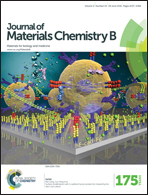Exploration of the tight structural–mechanical relationship in mulberry and non-mulberry silkworm silks
Abstract
The Bombyx mori silkworm is well known as it has been bred by our ancestors with mulberry tree leaves for thousands of years. However, Bombyx mori is not the only silkworm that can produce silk, many other kinds of silkworms can also make silks for commercial use. In this research, we compare the mechanical properties of five different commercial silk fibres including domesticated mulberry Bombyx mori, non-mulberry semi-domesticated eri Samia ricini, and wild tropical tasar Antheraea mylitta and muga Antheraea assamensis. The results demonstrate that the non-mulberry silk fibres have a relatively high extensibility as compared to the mulberry silk fibres. In the meantime, the non-mulberry silk fibres show comparatively unique toughness to the mulberry silk fibres. Synchrotron radiation FTIR microspectroscopy, synchrotron radiation wide angle X-ray diffraction, and Raman dichroism spectroscopy are used to analyze the structural differences among the five species of silk fibres comprehensively. The results clearly show that the mechanical properties of both mulberry and non-mulberry silk fibres are closely related to their structures, such as β-sheet content, crystallinity, and the molecular orientation along the fibre axis. This study aims to understand the differences in the structural and mechanical properties of different mulberry and non-mulberry silk fibres, which are of importance to the related research on understanding and utilizing the non-mulberry silk as a biomaterial. We believe these investigations not only provide insight into the biology of silk fibroins from the non-mulberry silkworms but also offer guidelines for further biomimetic investigations into the design and manufacture of artificial silk protein fibres with novel morphologies and associated material properties for future use in different fields like bioelectronics, biomaterials and biomedical devices.


 Please wait while we load your content...
Please wait while we load your content...